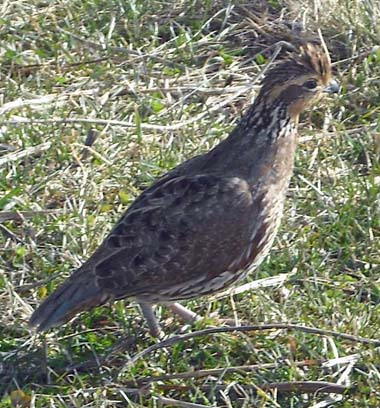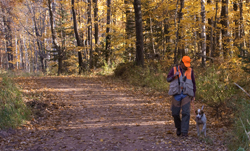Training with bobwhite quail
Much of what a bird dog needs to know is learned from the birds themselves. Among those lessons is the key concept that the dog can’t catch the bird. The dog needs to understand that once it smells a bird, it should stop, point and stay on point. It will learn that moving closer will cause the bird to flush and once flushed, the bird is gone and the fun is over.

Wild birds are the ultimate teacher of this lesson. But it’s not always possible or feasible to completely develop a dog on them. The next best option is to use liberated birds in situations where the birds act as close to wild as possible.
We’ve tried chukar partridge and Hungarian partridge but bobwhite quail have proved to be the best.
After some trial and error, I now have two reliable methods of working with quail. Both worked at our home kennel and at winter training sites in Oklahoma and Tennessee.
First, though, it’s important to find the right habitat. The cover needs to be thin enough so the birds can easily fly from it, but also near enough to areas with heavy cover where they can fly to and escape.
My preferred method is to establish a strong, well-seasoned covey using a Johnny house. I basically “train” these quail by flushing them from the house many, many times. They fly into the surrounding area and become familiar with the cover. The more these birds are used, the better they get. After they’re adjusted to the habitat, it’s not uncommon to have the covey disappear for a day or more before coming back to the house and, when they do that, you have some great training birds.
The second option is to release a covey in a likely area surrounded by a good mix of cover. I then feed them three times per week to keep them coming back. There are two big disadvantages: the whole covey can be lost and these birds aren’t as reliable as Johnny house quail. But this method is invaluable for advanced training and teaching a dog that birds are not always easy to find.
We put great effort into having quality released birds for training; it’s expensive and time consuming. Ultimately, it’s worth it because the better the birds, the better the bird dog.
Martha Greenlee’s article on Steady With Style provides excellent advice on using training birds.




